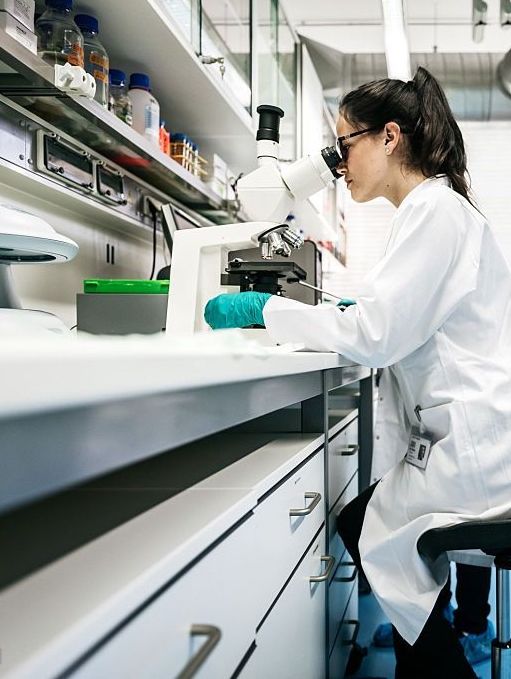Welcome to the heart of Carbon Grove—our Research & Innovation page. Here, we dive deep into the science and strategies behind our mission to combat climate change by enhancing the natural power of trees through genetic engineering.
We’re re-imagining forests as living, breathing climate solutions by leveraging cutting-edge research and technology to amplify their natural abilities to capture carbon, grow faster, and thrive in a changing world.
Our Approach
At Carbon Grove, we believe that nature holds the key to healing our planet. By combining the beauty of natural systems with the precision of science, we are developing trees that:

- Absorb more carbon dioxide (CO₂).
- Grow faster and reproduce more effectively.
- Store carbon for longer periods.
- Adapt to and withstand climate stressors like drought, heat, and pests.
Our Key Areas of Research
1. Enhancing Photosynthesis
Photosynthesis is the process by which plants convert sunlight and carbon dioxide into energy. While it’s one of the most remarkable processes in nature, it’s far from perfect. Most plants only convert about 1–2% of sunlight into usable energy.
Our Innovations:
- Improving RuBisCO Efficiency:
- RuBisCO, the enzyme responsible for capturing CO₂ during photosynthesis, is slow and prone to errors, sometimes capturing oxygen instead of CO₂.
- Using genetic engineering, we’re introducing optimized versions of RuBisCO from cyanobacteria, which are more efficient and allow trees to fix more CO₂. Research in crops has already shown increases in photosynthetic efficiency by up to 40%.
- Bypassing Photorespiration:
- Photorespiration is a wasteful side effect of RuBisCO’s inefficiency. By engineering alternative pathways to bypass photorespiration, we aim to reduce carbon losses and increase energy available for growth.
- Incorporating C4 Photosynthesis Traits:
- C4 photosynthesis, used by plants like maize, is far more efficient than the C3 process used by most trees. We’re exploring how to introduce C4 traits into trees, enhancing their carbon capture capabilities even under high temperatures and low CO₂ conditions.
2. Accelerating Growth and Reproduction
Faster-growing trees mean faster carbon capture, and trees that reproduce more efficiently can restore degraded ecosystems more quickly.
Our Innovations:
- Modulating Growth Hormones:
- Trees naturally produce hormones like gibberellins and cytokinins, which regulate growth. By increasing these hormones, we can encourage faster cell division and elongation, resulting in taller, fuller trees.
- Engineered poplar trees, for example, have shown growth rates up to 25% higher than their natural counterparts.
- Expanding Root Systems:
- Deeper and more extensive root systems allow trees to store more carbon underground while improving their resilience to drought. Genes like DRO1, which control root depth, are key targets for modification.
- Reducing Juvenile Periods:
- Many trees take decades to reach maturity. By tweaking flowering genes (e.g., FT1 and FT2), we can shorten the juvenile phase, allowing trees to reproduce and spread faster.
- High-Reproductive Capacity:
- Inspired by fast-spreading plants like dandelions, we are working on increasing seed production in trees to help restore forests rapidly.
3. Boosting Carbon Storage
Carbon storage doesn’t end with photosynthesis. Trees hold carbon in their biomass—trunks, branches, and roots—and in the soil through their root systems.
Our Innovations:
- Increasing Lignin and Cellulose:
- Lignin and cellulose are the structural components of wood and are made of carbon. By enhancing the production of these biopolymers, we can store more carbon in each tree.
- We’re also exploring ways to create “super-durable” lignin that decomposes more slowly, keeping carbon locked away for longer periods.
- Symbiotic Fungi:
- Trees form partnerships with mycorrhizal fungi, which store carbon in underground networks. By enhancing these relationships, we can increase soil carbon storage and enrich ecosystems.
4. Adapting to Climate Stressors
Climate change is making life harder for trees, with rising temperatures, prolonged droughts, and invasive pests threatening forests worldwide.
Our Innovations:
- Drought Tolerance:
- By introducing genes from desert plants, we can help trees retain water during droughts. This includes modifying stomatal behavior (pores on leaves that regulate water loss).
- Heat Resistance:
- Overexpressing heat-shock proteins can protect trees from high-temperature damage.
- Pest Resistance:
- Genetic modifications, like those used in pest-resistant Bt crops, can protect trees from invasive insects and diseases without the need for chemical pesticides.
5. Exploring Bioluminescence
While carbon capture is our primary goal, we’re also exploring ways to integrate bioluminescence into trees for sustainable urban lighting. Inspired by organisms like fireflies and bioluminescent fungi, we’re testing:
- Fungal Bioluminescence Pathways:
- These self-sustaining pathways require no external inputs, making them ideal for trees.
- Potential Applications:
- Urban trees that glow at night could replace streetlights, reducing energy consumption and CO₂ emissions from electricity.
Although this is still in the early stages of development, it showcases the broader potential of merging nature and biotechnology.
Challenges and Next Steps
We understand that enhancing trees comes with challenges, and we’re committed to addressing them responsibly:
- Ecological Impact: Ensuring genetically modified trees don’t disrupt native ecosystems.
- Public Perception: Building trust and transparency around genetic engineering.
- Scaling Up: Testing these innovations in real-world environments and scaling production to meet global needs.
Next, we aim to conduct large-scale field trials, partner with environmental organizations, and further refine our technologies to maximize impact.
Click here for a more in depth research report
Join The Movement
At Carbon Grove, we’re combining the power of science and nature to create a better future. By supporting our work, you’re contributing to a greener planet and a legacy of sustainability.
